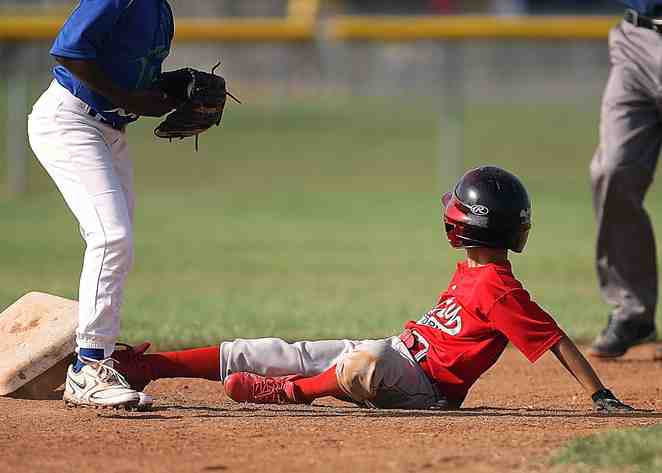
Base Running, Youth Baseball’s Tenth Man
Anyone who saw the 2000 World Series saw one of the worst exhibitions of base running ever. Especially in game one when the New York Mets literally ran themselves out of a rally which cost them the game and quite possibly could have changed the whole outcome of the Series.
Who could forget when Timo Perez of the Mets was on first base and after the batter hit the ball deep to left, slowed down while running between first and second only to be thrown out at home because the ball ended up being in play.
Or how about when Todd Ziele hit a slow grounder to third and doesn’t run it out because it is in foul territory only to have the ball kick fair before it reached third and Ziele was thrown out while almost standing in the batter’s box.
Then there was Jay Payton hitting a three foot roller in front of home plate and he thought it was foul and stood in the batter’s box. The Yankee catcher, Jorge Posada picked it up and tagged out Payton while holding the runner on second. We also saw Mike Piazza being picked off first base in the same game.
What can we teach our youth baseball players from this? Base running has always been very underrated in baseball.
In youth baseball, some coaches (including myself) claim you can get one to three extra runs per game with aggressive smart base running.
One year my team won the league championship and a few months following the season I picked up my score book and after going through it, discovered that my team had been thrown out at home 13 times during the season in the course of twenty three games.
Probably a record that will never be broken. During the season I didn’t realize that we were thrown out this much but we must have scored about 25-30 extra runs by being aggressive and smart on the bases.
I’ve learned over the years that my fastest base runners aren’t necessarily the smartest and the slow base runners can make up for their lack of speed by being smart.
But can a team practice smart base running? Are there drills to help even the slowest base runners?
There are and in a one hour practice, I always devote ten to fifteen minutes to base running drills.
There are numerous base running drills we practice. Here is one of them. The first drill we practice is with a man on either second or third with less than two out and a ground ball is hit to the left side of the infield.
We want the runner to advance to the next base when the fielder lets go of the ball. I have a coach play first base and have a shortstop and second baseman.
The players (or base runners) line up at second. The coach stands at home plate and hits a ground ball to either the shortstop or third baseman. The runner at second will bounce off the base and once the fielder let’s go of the ball on his throw to first, puts his head down and sprints to third.
The next base runner at second and the player who is at third will be the runners on the next ground ball. This a great drill and goes quick. The player who was at third and goes home, goes back to the end of the line at second.
A couple of teaching points and things to remember. Teach the base runners that if they are at second and the ground ball is hit to third, they can bounce off further. Same thing with the runner at third, if the ball is hit to shortstop they can bounce off further than if it was hit to the third baseman.
Another teaching point is that the base runner at third always slides at home. There should not even be a question about it.
Also in this drill have a signal with the fielders like scratching your head, and that signals the fielder to fake the throw and catch the runner off the base. This is very effective and the base runners learn from this if they are tagged out.
Base running is a part of baseball that does not get a lot of attention in practice. The best base running teams are those that drill their players in practice.
Another added benefit for the younger players if a coach puts an emphasis on base running, is they will tend to pay closer attention to the game when they are on base.
Drill your team in base running and you will actually see how it can become your tenth man on the team and you will be happy with the benefits.
Next in Sports: Baseball Practise